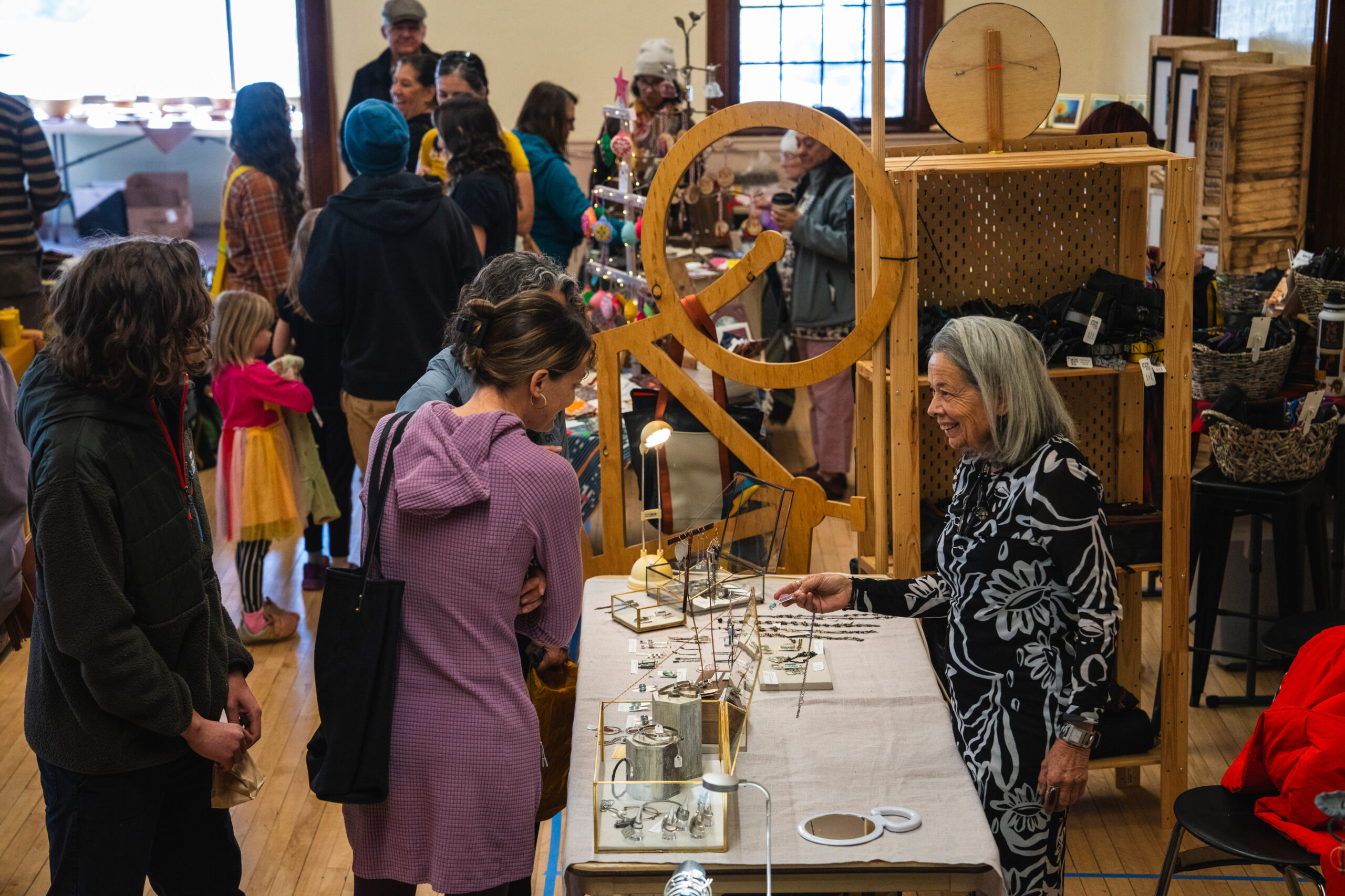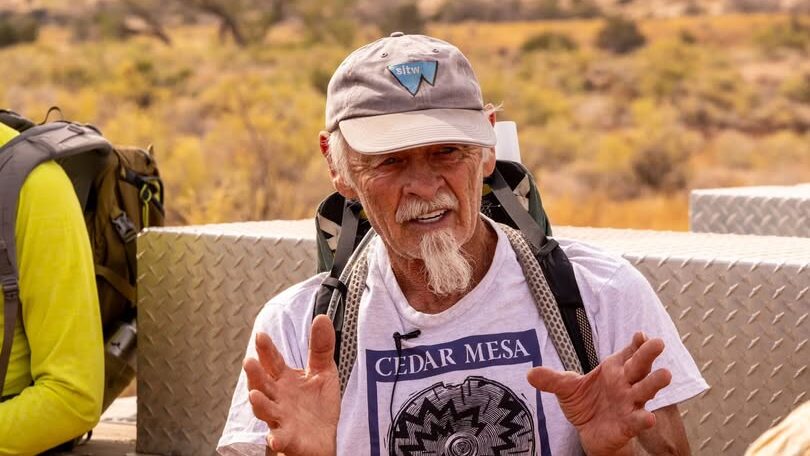Some information may be outdated.
On the walls of the Moab Information Center, tape delineated the shape of fish on a multichrome backdrop as artist Chris Peterson took a break to explain the 20×30 foot mural of a razorback sucker– an endangered fish that is native to the Colorado River.
The mural is part of a broader-scale project called Utah Wildlife Walls, an effort to engage and educate the public on the wildlife in Utah’s magnificent landscape through art. Peterson has taken on the task of painting large murals in each of the counties in Utah. This is his fifth of 29 murals sponsored in part by the Utah Wildlife Federation– a fledgling nonprofit that aims to protect Utah’s wildlife heritage through nonpartisan collaboration, according to the organization’s website.
“People are realizing that murals can have a creative place-making power,” Peterson said. By filling blank walls with images of the species that are “the magic to the already beautiful landscape,” he’s hoping to inspire appreciation for the wildlife in rural Utah. He noted nature’s therapeutic power for calming our nervous systems. His life work is to help connect people to this tool. His diverse background in river advocacy, community building, teaching elementary art and his degree in painting, have allowed him to create a network that brings to life a larger vision of protecting and caring for nature.

Peterson has been painting murals for over seven years, and enjoys being able to merge his unique skills as an artist with public engagement with nature. A Provo native, he recognizes the draw of rural wildlife for both rural citizens and city-dwellers. Work as a photographer gave him an appreciation for landscapes, but he noticed that encounters with wildlife were really special moments—that’s why wildlife is the focus of his project. Besides, he mentioned — many blank walls would look better with art, and it costs nearly as much as covering it with stucco.
A previous version of the mural featured a male razorback with Pink Floyd-esque beams emitting from an eye – a nod to the male fish’s neat behavioral adaptation of alerting other males of their territory by reflecting the light of the sun in a spectrum that predators cannot see. This is referred to as “lazerbiscuits,” according Utah Division of Wildlife Resources biologist Sam Brockdorff, reflecting that “fishes occupy a reality peripheral to our own.”
Back of Beyond Books and the Apache Motel pitched in money for the initial phase of the project, painted in March, which lured visitors in with the words “coming soon.”

This week, Peterson painted over the previous art to create a full panel mural, which he called “phase two,” featuring a larger razorback sucker, which invites passersby to learn more about the native fish and its lifecycle and challenges by scanning the QR code on the bottom of the mural. For the second phase of the Moab mural, The Nature Conservancy is fully funding the project. The Nature Conservancy also manages the Scott and Norma Matheson Wetlands Preserve in Moab.
“Through this collaboration, we hope to build strong community, raise awareness about Utah’s spectacular wildlife, and inspire people to explore the outdoors,” reported The Nature Conservancy.
Peterson hopes there will be tours of the native fish nursery site at the Preserve in the fall to help educate people and bring them into encounters with wildlife. The newly constructed nursery at the Wetlands provides a haven for razorback larvae to grow bigger to help them survive on their own in the Colorado River.
The mural will take a week to paint and will be completed by Friday, May 17th, which also happens to be Endangered Species Day. Across the state of Utah, there are 17 species federally listed as endangered or threatened, including the prairie dog, the Greater-sage grouse, and the relict leopard frog.
The new razorback mural is a way to celebrate this beloved fish species, and not get into the weeds about controversy, according to Peterson. He noted that it’s also a way to appreciate the species while we have the opportunity, as they might not be here down the line, due to challenges they face from drier weather and increased predation. One amazing accomplishment to celebrate is the resurgence of juvenile razorback suckers in the wetlands thanks to the new nursery – last fall, biologists reported 51 juvenile razorbacks in the nursery.

Peterson said this style of non-traditional engagement is about exploring how we can connect people to the land. Next time you are walking past the Moab Information Center, check out the new mural for yourself!
Appreciate the coverage? Help keep local news alive.
Chip in to support the Moab Sun News.




